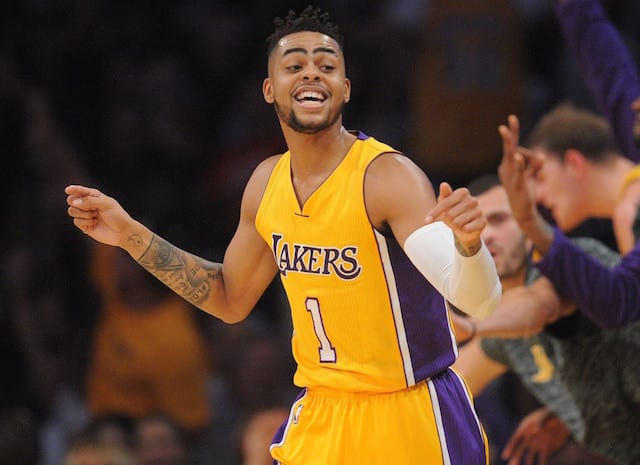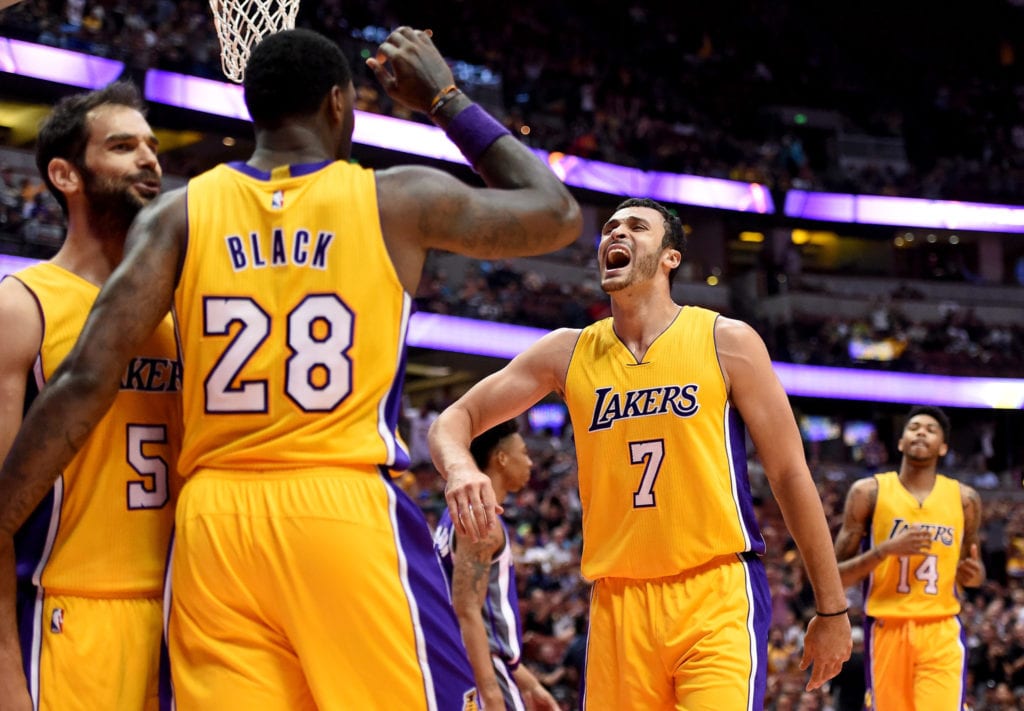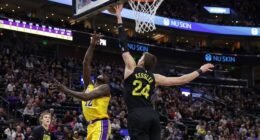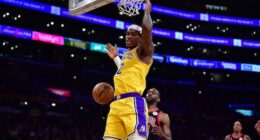The Los Angeles Lakers have started the 2016-17 regular season 1-2 after a surprising victory at home over the Houston Rockets followed by expected losses on the road to the Utah Jazz and the Oklahoma City Thunder.
It is very early, but after a feel-good offseason and a strong start to the preseason, the reality of where this team stands right now is starting to sink in with each loss.
Still, there is reason to believe the current Lakers squad will fare better than last year’s team which started 3-21. In both losses so far the games never got out of hand, the team battled hard, and they were in a position to win but fell apart at the end due in large part to their inexperience.
They have to learn to win close games in the fourth quarter, which will come with time. Presently, there are a few key issues which are in theory correctable, such as the number of turnovers, allowing teams too many second chance points, and fouling too often which allowed the Jazz an astounding 40 free throws last week.
Here are five early season observations on the Lakers’ personnel:
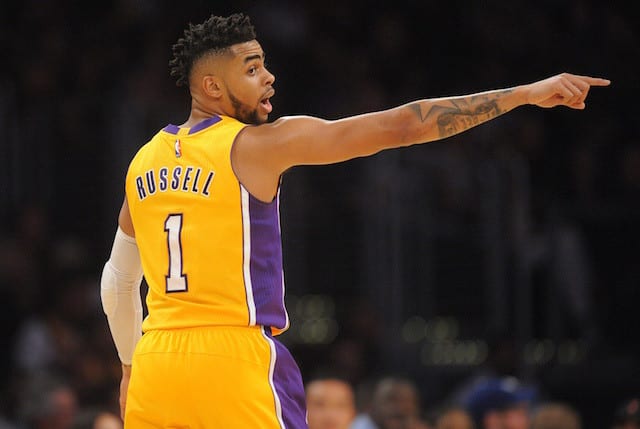
1. The Lakers have staked their future on D’Angelo Russell
If it was not clear before, after three games, it is very obvious that the Lakers’ fortunes this year will turn largely on three players, Russell, Randle, and Clarkson. We have already seen great moments from all three, but we have also seen them fall flat the next time out. The Lakers will start winning games when these three men start playing consistently, instead of having one good half or one good game followed by a bad one. They need to score consistently, move the ball consistently, avoid turnovers, and work hard on defense all the time.
Much of the burden will fall on 20-year-old Russell, who, for better or worse, has been anointed to be the leader. The coaches and front office see something in him that is not always clear to everyone else. They have placed all their faith in him and made him the focus of the team, the primary ball handler, and the player everyone else is supposed to feed off of most of the time. This is high stakes poker after his disappointing season last year.
So far, Russell’s assists are up but so are his turnovers, and his shooting remains subpar at 34 percent overall from the field (combined with Deng and Nick Young who are at 33 percent, three-fifths of the starters have not shot well). He is torched by the league’s better point guards like Damian Lillard, James Harden, and Russell Westbrook, which raises the question, is he capable of developing into that caliber of player?
People are lined up on both sides of that argument, and the Lakers’ fortunes over the next five to ten years depend heavily on how that question is answered. It will take more than this year to get a definitive answer – Russell is still only 20 — but with so much playing time and focus on one player, we should have a much better idea as the season goes on.
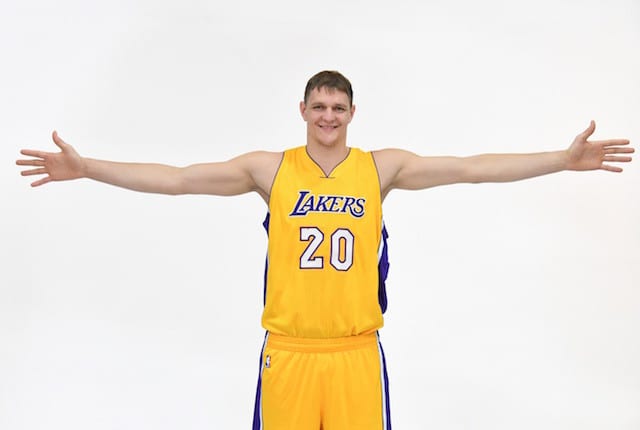
2. Timofey Mozgov is an improvement at center
So far, Mozgov is playing 22 minutes per game and averaging 9.3 points. He is making 58 percent of his shots from the field and 86 percent of his free throws while averaging 6.3 rebounds per contest. These numbers are consistent with his career statistics and are probably what the Lakers can expect going forward, which is not bad.
Mozgov has also done a pretty good job on defense and has blocked some key shots. When he switches to help out, someone has to cover the man he leaves behind, which is not his fault. Overall, he is an improvement over last year’s starter Roy Hibbert, and while he is not a difference maker, he is a modest piece of the puzzle and a legitimate NBA center.
One would hope that over the next two or three years the team could get an upgrade at that position, but for now, he is fine. That said, his minutes have been lower than expected and it would be helpful if he could play 27 minutes a night.
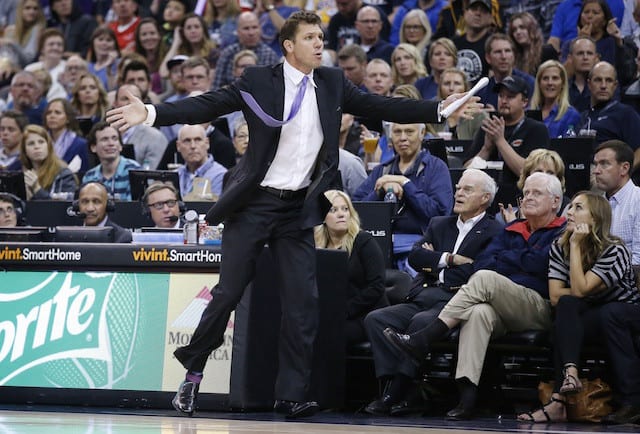
3. The team’s attempts to play small-ball have been ineffective
In the preseason, Tarik Black was a solid second unit center, and the team had success when he was on the court. He has continued to play well, including an eight-point, seven-rebound performance in only 10 minutes against the Utah Jazz. The problem is, Black is playing fewer minutes than expected. Instead, when the team goes small, they are trying to use Julius Randle and Larry together in the frontcourt, and thus far the team has struggled when this happens.
Small ball may is a popular concept in today’s NBA, but a team has to have the personnel to pull it off. Further, there are certain teams against whom it will not work as well. The Jazz features Rudy Gobert and Derrick Favors, who had 13 and nine rebounds, respectively, in their recent game against the Lakers. They combined for a whopping 11 offensive rebounds, which was a key to their victory. Oklahoma City features Steven Adams and Enes Kanter up front, who combined for 30 points and 18 rebounds against the Lakers. The Lakers played into their hands by playing Black only 11 minutes.
Black is not tall but he is stronger than Nance and Randle and thus more suited to guard the big men on the Jazz or Thunder. If they play small ball, the Lakers may need to increase Black’s minutes.

4. Brandon Ingram looks comfortable; Luol Deng does not
There were times in the preseason when it looked like Brandon Ingram was so raw that he would not contribute much for a long while. Thankfully, that first impression was mistaken. Ingram is a work in progress for sure, but he plays hard and under control, and so far he has looked quite comfortable on the court, much more so than D’Angelo Russell did last year. His minutes have been sporadic, but he is already contributing, and when he missed most of the Utah game with an injury the Lakers felt his absence.
If he stays healthy, Ingram should dramatically improve as the season goes on and he plays more. In the second half, he may become a major contributor.
Luol Deng, on the other hand, looks uncomfortable and out of place so far. He doesn’t quite fit with the young players around him and would no doubt do better on a roster comprised of mostly veterans. It is reminiscent of Brandon Bass’ brief tenure with the Lakers last season, where he mentored the younger players, worked very hard on the court and was effective much of the time. But he never seemed to fit with everyone and everything around him. Bass was a one-year rental while Deng signed a large four-year contract.
In the most recent game against the Thunder, Deng did not score in 22 minutes and had only two rebounds. He is shooting 33% from the field so far this year. It is unclear why Deng chose to come to the struggling Lakers at this stage of his long career unless it was for the money, but the Lakers had better figure out how to use him more effectively, or it will be a long four years.
5. Larry Nance Jr. has started slowly
Nance, Jr. is a fan favorite, and after a strong Summer League performance, some thought he might press Randle for the starting power forward job. Whether he started or not, much was expected of Nance this year as he is a mature, intelligent player who many thought was ready to take a big leap in his second year and become a team leader. So far, however, Nance has struggled and been largely invisible while Randle has been assertive and seemingly much improved.
Part of the problem is that the coaching staff has him playing center much of the time against much larger players, which has not gone well. More importantly, Nance has reverted to his bad habit of disappearing on the offensive end of the court. He showed a vastly improved mid-range game in Summer League and preseason, but like last year, once the regular season started he has not been aggressive on the offensive end and does not look to shoot.
Nance Jr. is a very important member of the team, and the Lakers desperately need him to step it up.
